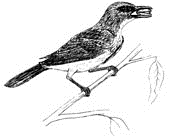Vertebrate Pest Conference: Proceedings

Vertebrate Pest Conference Proceedings: 17th (1996)
Date of this Version
1996
Document Type
Article
Citation
Published in Proceedings: Seventeenth Vertebrate Pest Conference … 1996, ed. Robert M. Timm & A. Charles Crabb (University of California, Davis, 1996).
Abstract
Welcome to the 17th Vertebrate Pest Conference; THE conference for those of us who work in the field of vertebrate pest management. Actually, I prefer the term wildlife damage management to either animal damage control or vertebrate pest control, but as long as one takes a broad perspective on the definition of wildlife, there is really no difference except perhaps in perception. I do not mean to suggest that the name of the Vertebrate Pest Conference should be changed. It should not be changed. However, I do suggest that no matter what umbrella term you operate under, we are all in the same business.
Speaking for myself, I am very pleased to be involved with wildlife damage management. Explaining why is what I hope to accomplish during this opening address for the 17th Vertebrate Pest Conference.
The premise behind my remarks this morning is really quite simple. No matter what we choose to call it, working with vertebrate pests in a nuisance, damage, or human health or safety context is a "growth industry." We have opportunities and challenges not available to some segments of the wildlife management profession.
As an Extension Wildlife Specialist, I have had the opportunity to interact with the public at many different levels over the past 18 years. That experience, plus more recent work with the Wildlife Society's Wildlife Damage Management Working Group (WDMWG), The National Animal Damage Control Association (NADCA), and the various wildlife damage conferences including the VPC, has allowed me to develop a list of opportunities and challenges for your consideration.
Included in
Animal Sciences Commons, Bioresource and Agricultural Engineering Commons, Environmental Engineering Commons


Comments
Copyright © 1996 (where applicable) by the Vertebrate Pest Council of the Vertebrate Pest Conference. Used by permission.